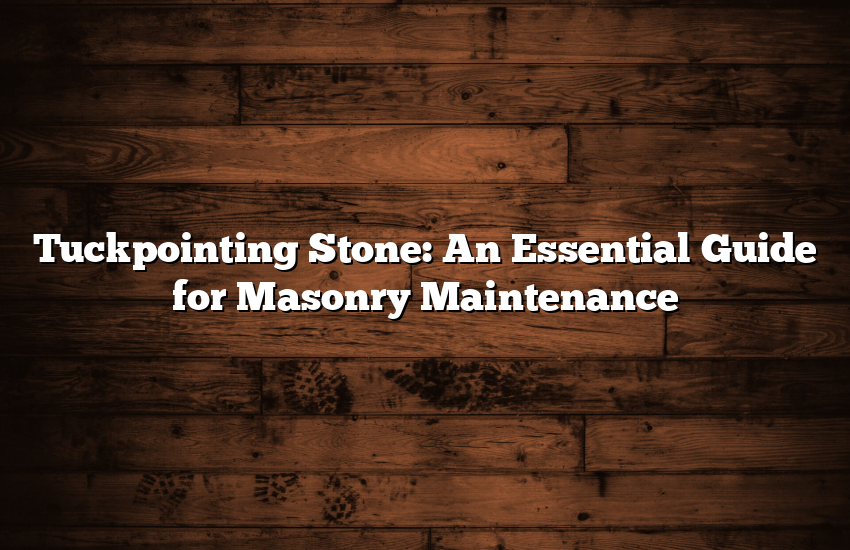
Tuckpointing stone is a term that might sound unfamiliar to many, but it plays a crucial role in the world of masonry. This process is not just about aesthetics; it’s essential for maintaining the integrity and longevity of stone structures, especially in places like the USA where historic buildings are treasured.
Table of Contents
What is Tuckpointing Stone?
Tuckpointing is a method of repairing and refining the mortar joints between stones or bricks. This technique involves removing old, deteriorating mortar and replacing it with fresh mortar. It’s often accompanied by the addition of thin lines (tuck lines) in a contrasting color, enhancing the visual appeal of the masonry.
The History and Evolution of Tuckpointing
The practice of tuckpointing originated in Europe in the late 18th century. Initially, it was a way to mimic the look of high-end rubbed bricks, which were more expensive. Over time, it evolved into a recognized preservation technique for stone and brick structures.
Why is Tuckpointing Stone Important?
- Structural Integrity: Regular tuckpointing helps maintain the structural stability of masonry.
- Weather Resistance: It prevents water and moisture from seeping into walls, which can cause significant damage.
- Aesthetic Appeal: Tuckpointing can greatly enhance the look of a building, restoring its original beauty.
The Process of Tuckpointing Stone
The tuckpointing process involves several steps:
- Mortar Removal: Old, damaged mortar is carefully removed from the joints.
- Mortar Matching: New mortar is created, often customized to match the existing mortar in color and composition.
- Refilling Joints: The new mortar is applied carefully to the joints.
- Tuck Lines: To create a neat, finished look, one adds thin lines, often in a contrasting color.
When Do You Need Tuckpointing?
It’s advisable to inspect your stone masonry regularly. Signs that you need tuckpointing include crumbling mortar, visible cracks, and moisture issues inside the building.
DIY vs. Professional Tuckpointing
While some homeowners attempt DIY tuckpointing, it’s a skill-intensive job. Professionals ensure that they perform the job correctly and safely, utilizing the right tools and expertise.
Tuckpointing Stone in the USA
In the USA, tuckpointing stone is particularly important due to the country’s diverse climate conditions. From freezing temperatures to scorching heat, these weather variations can accelerate the deterioration of mortar.
Conclusion
Tuckpointing stone is more than just a maintenance task; it’s an investment in the longevity and beauty of your property. Whether you’re a homeowner or a professional in the field, understanding the importance and process of tuckpointing can greatly benefit the preservation of masonry structures. Remember, the best approach is a combination of professional skill and regular maintenance to keep your stone structures standing strong for years to come.
FAQs About Tuckpointing Stone
How frequently should one perform tuckpointing?
Typically, one should perform tuckpointing every 25-30 years, but this can vary based on the climate and stone type.
Can tuckpointing stone improve home value?
Absolutely! It not only enhances the appearance of your home but also ensures structural integrity, which can increase property value.
Is tuckpointing an expensive process?
The cost varies depending on the size of the area and the condition of the masonry. However, considering its benefits, it’s a valuable investment.
Can I tuckpoint in any season?
In mild weather conditions, ideally, one should perform tuckpointing to ensure the mortar sets properly.
Are there color options for tuckpointing?
Yes, there are various color options for the mortar and tuck lines to match or contrast with your existing masonry.


